Premium Only Content
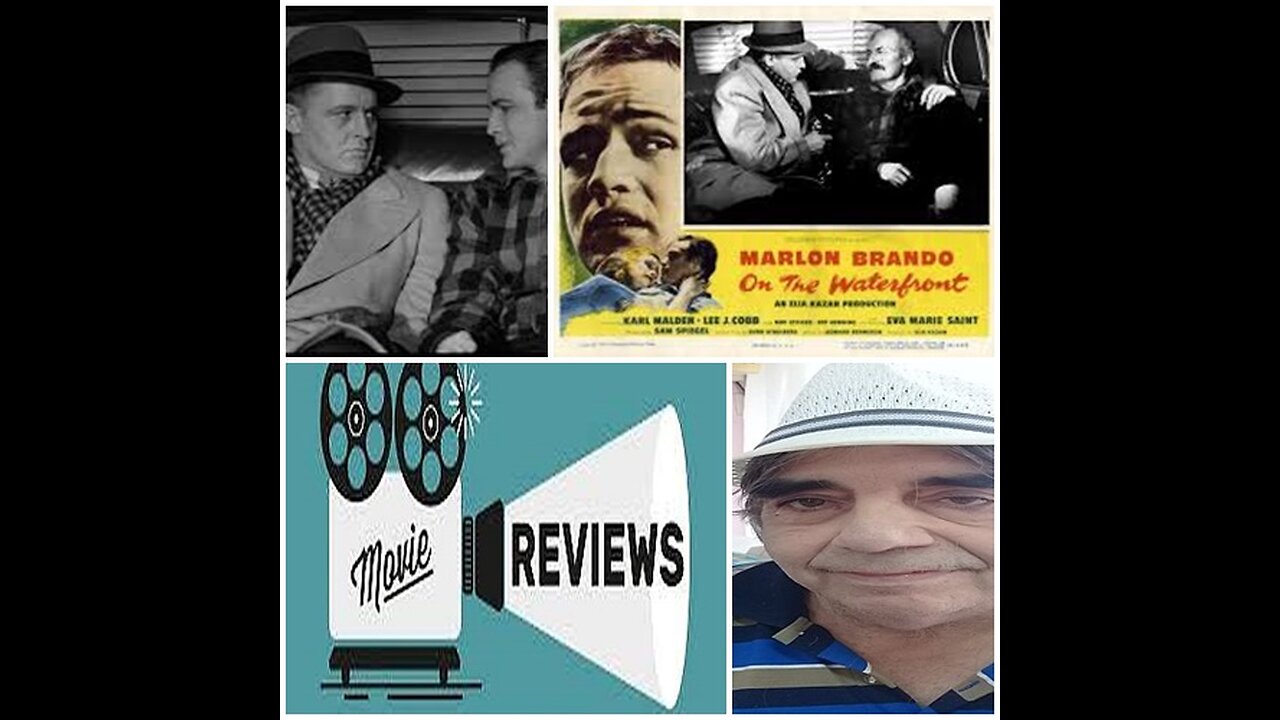
On The Waterfront 1954 Movie Review
A classic movie released in the year of my birth - this is my short review + 3 classic scenes
On the Waterfront is a 1954 American crime drama film, directed by Elia Kazan and written by Budd Schulberg. It stars Marlon Brando, and features Karl Malden, Lee J. Cobb, Rod Steiger, Pat Henning and Eva Marie Saint in her film debut. The musical score was composed by Leonard Bernstein. The black-and-white film was inspired by "Crime on the Waterfront" by Malcolm Johnson, a series of articles published in November–December 1948 in the New York Sun which won the 1949 Pulitzer Prize for Local Reporting, but the screenplay by Budd Schulberg is directly based on his own original story.[1] The film focuses on union violence and corruption among longshoremen, while detailing widespread corruption, extortion, and racketeering on the waterfronts of Hoboken, New Jersey.
On the Waterfront was a critical and commercial success and is considered one of the greatest films ever made. It received twelve Academy Award nominations and won eight, including Best Picture, Best Actor for Brando, Best Supporting Actress for Saint, and Best Director for Kazan. In 1997, it was ranked by the American Film Institute as the eighth-greatest American movie of all time; in AFI's 2007 list, it was ranked 19th. It is Bernstein's only original film score not adapted from a stage production with songs.
In 1989, On the Waterfront was one of the first 25 films to be deemed "culturally, historically, or aesthetically significant" by the Library of Congress[2] and selected for preservation in the United States National Film Registry.[3][4]
Plot
New York prize fighter Terry Malloy's career was cut short when he purposely lost a fight at the request of mob boss Johnny Friendly. Terry now works for Friendly's labor union as a longshoreman while his older, more educated brother Charley is Friendly's right-hand man. Terry is coerced into luring fellow worker Joey Doyle onto a rooftop, where he believes Friendly's henchmen want to talk Joey out of testifying to the Waterfront Crime Commission. When they instead murder Joey by throwing him off the roof, Terry confronts Friendly, but is threatened and bribed into acquiescence.
Joey's sister Edie shames priest Father Barry into calling the dockworkers to a meeting, where he tries unsuccessfully to persuade them to stand together. Terry attends as a snitch for Friendly, but when the meeting is violently broken up by Friendly's men he helps Edie escape and misses Father Barry convincing one worker to testify. Friendly and Charley are angry at Terry's involvement with Edie and for not informing them of the testimony. The worker who testified is killed in a staged workplace accident.
Father Barry makes a speech comparing the murders to Christ's crucifixion. Terry's unwillingness to testify lessens with his growing feelings for Edie and her pursuit of justice. He confesses his role in Joey's death to Father Barry and later to Edie, who runs from him.
Friendly sends Charley with a job offer to keep Terry quiet. Knowing Friendly will have Terry killed if he refuses, Charley tries to persuade his brother, eventually threatening him with a gun. Terry waves him away and expresses regret about throwing his best fight, blaming Charley for setting up the fix. Charley gives Terry the gun and tells him to run. Terry finds Edie and they kiss. Hearing Terry's name called, they run out and find Charley's body hung in the alley.
Terry goes to a bar to shoot Friendly, but Father Barry persuades him to testify in court instead. Following Terry's damning testimony Friendly is cut off from his powerful friends and facing indictment. Friendly bars Terry from union jobs. At the dock everyone is called to work except Terry, who taunts Friendly, shouting that he is proud to have testified.
Friendly goads Terry into attacking him. He calls for his thugs, who severely beat Terry. The longshoremen refuse to work unless Terry is also allowed to work. Father Barry tells Terry that he lost the battle but can win the war if he can walk into the warehouse. Terry stumbles to the warehouse, where the boss nods to Terry and tells them to get to work. The men follow Terry inside, ignoring Friendly as he berates them. The door closes, leaving Friendly outside.
Cast
Marlon Brando as Terry Malloy
Karl Malden as Father Pete Barry
Lee J. Cobb as Michael J. Skelly aka "Johnny Friendly"
Rod Steiger as Charley "the Gent" Malloy
Pat Henning as Timothy J. "Kayo" Dugan
Leif Erickson as Lead Investigator for Crime Commission
James Westerfield as Big Mac
Tony Galento as Truck
Tami Mauriello as Tillio
John F. Hamilton as "Pop" Doyle
John Heldabrand as Mott
Rudy Bond as Moose
Don Blackman as Luke
Arthur Keegan as Jimmy
Abe Simon as Barney
Eva Marie Saint as Edie Doyle
Fred Gwynne as Mladen "Slim" Sekulovich (uncredited)
Martin Balsam as Gillette, Secondary Investigator for Crime Commission (uncredited)[5]
Katherine MacGregor as a longshoreman's mother (uncredited)[6]
Pat Hingle as Jocko (uncredited)[7]
Nehemiah Persoff as Cab Driver (uncredited)[5]
Thomas Hanley as Tommy (credited as Thomas Handley)[5]
Production
Marlon Brando as Terry Malloy and Eva Marie Saint as Edie Doyle in the film's trailer
Eva Marie Saint as Edie Doyle and Marlon Brando as Terry Malloy
Karl Malden as Father Barry, with Eva Marie Saint
Screenplay and political context
Further information: McCarthyism
The film is widely considered to be Elia Kazan's answer to those who criticized him for identifying eight Communists in the film industry before the House Committee on Un-American Activities (HUAC) in 1952. One of Kazan's critics was his friend and collaborator, the noted playwright Arthur Miller, who had earlier written the first version of the script, originally titled The Hook. Kazan had agreed to direct it, and in 1951 they met with Harry Cohn at Columbia Pictures about making the picture. Cohn agreed in principle to make The Hook, but there were concerns about the portrayal of corrupt union officials.[8] When Cohn asked that the antagonists be changed to Communists, Miller refused. Cohn sent a letter telling Miller it was interesting he had resisted Columbia's desire to make the movie "pro-American". Kazan asked Miller to rewrite the script; Miller declined due to his disenchantment with Kazan's friendly testimony before the HUAC. Kazan then replaced Miller with Budd Schulberg.[9]
Cobb's character of Johnny Friendly was partly modeled on Johnny Dio, a real-life mobster known for involvement in labor racketeering.[10]
Casting
According to Richard Schickel in his biography of Kazan, Marlon Brando initially declined the role of Terry Malloy, and Frank Sinatra (a native of Hoboken, where the film was being made) then had "a handshake deal" – but no formally signed contract – to play the part, even attending an initial costume fitting. But Kazan still favored Brando for the role, partly because casting Brando would assure a larger budget for the picture. While Brando's agent, Jay Kanter, attempted to persuade Brando to change his mind, Kazan enlisted actor Karl Malden, whom Kazan considered more suited to a career as a director than as an actor, to direct and film a screen test of a "more Brando-like" actor as Terry Malloy, to persuade producer Sam Spiegel that "an actor like Marlon Brando" could perform the role more forcefully than Sinatra. To that end, Malden filmed a screen test of Actors Studio members Paul Newman and Joanne Woodward performing the love scene between Terry and Edie. Persuaded by the Newman/Woodward screen test, Spiegel agreed to reconsider Brando for the role, and shortly afterward, Kanter convinced Brando to reconsider his refusal. Within a week, Brando signed a contract to perform in the film. At that point, a furious Sinatra demanded to be cast in the role of Father Barry, the waterfront priest. It was left to Spiegel to break the news to Sinatra that Malden had been signed for this role.
Filming locations
On the Waterfront was filmed over 36 days on location in various places in Hoboken, New Jersey, including the docks, workers' slum dwellings, bars, littered alleys, and rooftops. The church used for exterior scenes in the film was the historic Our Lady of Grace, built in 1874, while the interiors were shot at the Church of St. Peter and St. Paul at 400 Hudson Street.[11]
Reception
Upon its release, the film received positive reviews from critics, and was a commercial success, earning an estimated $4.2 million at the North American box office in 1954.[12] In his July 29, 1954, review, New York Times critic A. H. Weiler called the film "an uncommonly powerful, exciting, and imaginative use of the screen by gifted professionals".[13]
On Rotten Tomatoes, the film holds a score of 99% from 111 reviews, with an average rating of 9.2/10. The website's critics consensus reads, "With his electrifying performance in Elia Kazan's thought-provoking, expertly constructed melodrama, Marlon Brando redefined the possibilities of acting for film and helped permanently alter the cinematic landscape".[14] On Metacritic, the film holds a weighted average score of 91 out of 100 based on 15 critics, indicating "universal acclaim".[15]
Gaining the Academy Award for Best Actor and being named the greatest and second-greatest film performance of all time by Aaron West of Criterion and by Premiere respectively,[16][17][18] Brando's performance is regarded as one of the watershed moments in the history of movies.[19][20] Through his portrayal of Terry Malloy, Brando popularized method acting and conclusively exemplified the power of Stanislavski-based approach in cinema. Praising Brando in 2004, director Martin Scorsese noted: "Everything that we know about the power of great screen acting relates back to him: when you watch his work in On the Waterfront ... you're watching the purest poetry imaginable, in dynamic motion".[21] Kazan, the director of the film, would later write in his book, "If there is a better performance by a man in the history of film in America, I don't know what it is."[22]
Al Pacino, recounting his own memories on first seeing On the Waterfront, told Playboy in a 1979 interview that he concentrated more on the lead actor than the film itself, "I couldn't move. I couldn't leave the theatre. I'd never seen the like of it."[23] Anthony Hopkins said, "When you see Brando in the famous cab scene in On the Waterfront, it's still breathtaking."[24] In a eulogy for Brando, Jack Nicholson described his display "probably the height of any age", and added that, "You just couldn't take your eyes off the guy. He was spellbinding."[25]
Awards and nominations
Award Category Nominee(s) Result Ref.
Academy Awards Best Motion Picture Sam Spiegel Won [26]
[27]
Best Director Elia Kazan Won
Best Actor Marlon Brando Won
Best Supporting Actor Lee J. Cobb Nominated
Karl Malden Nominated
Rod Steiger Nominated
Best Supporting Actress Eva Marie Saint Won
Best Story and Screenplay Budd Schulberg Won
Best Art Direction – Black-and-White Richard Day Won
Best Cinematography – Black-and-White Boris Kaufman Won
Best Film Editing Gene Milford Won
Best Music Score of a Dramatic or Comedy Picture Leonard Bernstein Nominated
Bambi Awards Best Film – International Won
Best Actor – International Marlon Brando Nominated
Bodil Awards Best American Film Won [28]
British Academy Film Awards Best Film from any Source Nominated [29]
Best Foreign Actor Marlon Brando Won
Most Promising Newcomer to Film Eva Marie Saint Nominated
Directors Guild of America Awards Outstanding Directorial Achievement in Motion Pictures Elia Kazan Won [30]
Golden Globe Awards Best Motion Picture – Drama Won [31]
Best Actor in a Motion Picture – Drama Marlon Brando Won
Best Director – Motion Picture Elia Kazan Won
Best Cinematography – Black and White Boris Kaufman Won
International Film Music Critics Association Awards Best Archival Release of an Existing Score –
Re-Release or Re-Recording Leonard Bernstein, Douglass Fake,
Frank K. DeWald, and Joe Sikoryak Won [32]
Nastro d'Argento Best Foreign Film Elia Kazan Won
National Board of Review Awards Top Ten Films Won [33]
Best Film Won
National Film Preservation Board National Film Registry Inducted [34]
New York Film Critics Circle Awards Best Film Won [35]
Best Director Elia Kazan Won
Best Actor Marlon Brando Won
Best Actress Eva Marie Saint Nominated
Online Film & Television Association Awards Hall of Fame – Motion Picture Inducted [36]
Venice International Film Festival Golden Lion Elia Kazan Nominated
Silver Lion Won
OCIC Award Won
Pasinetti Award Won
Writers Guild of America Awards Best Written American Drama Budd Schulberg Won [37]
In 1989, the film was deemed "culturally, historically, or aesthetically significant" by the Library of Congress, and selected for preservation in the United States National Film Registry.
In 1995, it made it on the Vatican's list of 45 important films.[38]
American Film Institute recognition
AFI's 100 Years... 100 Movies – #8
AFI's 100 Years... 100 Heroes and Villains:
Terry Malloy – #23 Hero
AFI's 100 Years... 100 Movie Quotes:
"You don't understand! I coulda had class. I coulda been a contender. I coulda been somebody instead of a bum, which is what I am." – #3
AFI's 100 Years of Film Scores – #22
AFI's 100 Years... 100 Cheers – #36
AFI's 100 Years... 100 Movies (10th Anniversary Edition) – #19
Home media
The first home video release of the film was by Columbia Pictures Home Entertainment in 1982, on VHS and Beta. RCA/Columbia Pictures Home Video later re-released it in 1984, 1986, and 1990, respectively, the latter being a part of the Columbia Classics line-up. Columbia TriStar later reissued the film on VHS in 1995 as part of the line-up's "Studio Heritage Collection", and the first DVD version was released in 2001. Among the special features is the featurette "Contender: Mastering the Method", a video photo gallery, an interview with Elia Kazan, an audio commentary, filmographies, production notes, and theatrical trailers. The film has been added to the Criterion Collection.
The 2013 Criterion Collection release presents the film in three aspect ratios: 1.66:1, 1.85:1, and 1.33:1. The accompanying booklet explains the reasoning behind this choice: "In 1953, Columbia Pictures was transitioning to the new widescreen format and declared that all its upcoming films, including On The Waterfront, would be suitable for projection in any aspect ratio from the full frame of 1.33:1 to the then widest standard of 1.85:1. The customary frame of European cinematographer Boris Kaufman (Twelve Angry Men, Baby Doll) split the difference at 1.66:1, so that all that was required was for him to leave extra room at the top and bottom of the frame and make sure that nothing essential would be lost in the widescreen presentation. At its premiere in 1954, On The Waterfront was projected at 1.85:1. Over subsequent decades, millions of television viewers became accustomed to seeing the film with the open-matte 1.33:1 framing, a presentation that has carried over into the home video era. Here, for the first time, Criterion is presenting the film in all three aspect ratios so that viewers can compare and choose the version they prefer."
Adaptations
In the same year that the film was released, Budd Schulberg published a novel simply entitled Waterfront based on his script. In the novel Terry Malloy dies. It is more heavily focused on the priest who stands up to the mob, and narrated in first person by him.
In 1984, the film script was adapted to stage by Schulberg, opening on Broadway in November. It had several technical innovations for the time, including lasers, filmlike scenic dissolves and sounds that enveloped the audience. As with Schulberg's earlier novel, the motivations of Father Barry are made more explicit, and the ending is less happy.[39] It was revised in 1995 and lasted for only 8 performances, losing $2.6 million, a record on Broadway for a non-musical at the time.[40]
The Indian films Kabzaa (1988), Ghulam (1998) and Sudhandhiram (2000) are inspired by On the Waterfront.[41]
A 2009 British stage production was directed by Steven Berkoff, who also played Johnny Friendly, with Simon Merrells as Terry. It played at the Theatre Royal, Haymarket in London, after the Nottingham Playhouse and the Edinburgh Festival Fringe.
-
 9:18:07
9:18:07
cbsking757
11 hours ago $15.86 earned★FINISHING NEBULA BEFORE WE START THE ABYSS GRIND! #callofduty #blackops6
39.7K2 -
 5:14:30
5:14:30
SpartakusLIVE
11 hours agoGIGA Spart exudes PEAK MASCULINITY
60.9K3 -
 45:41
45:41
Stephen Gardner
10 hours ago🔥Elon Musk’s SHOCKING Role in Trump’s Plan to EXPOSE DC Criminals | Errol Musk Speaks Out!
105K123 -
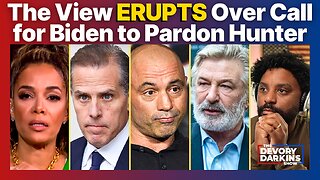 20:10
20:10
DeVory Darkins
16 hours ago $26.18 earnedThe View ERUPTS Over Call for Biden to Pardon His Son
81.8K109 -
 5:14:10
5:14:10
GamingChad
13 hours agoMS Flight Simulator 2024 - Lets Make this Turkey Fly -Career mode Pt.2
99.9K7 -
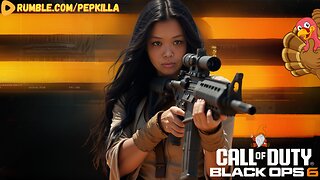 5:00:01
5:00:01
Pepkilla
14 hours agoHappy Thanksgiving ~ Wumble StwEeeem
61.9K5 -
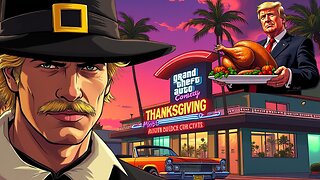 7:24:25
7:24:25
Rotella Games
1 day agoThanksgiving Side Missions & Hangout | GTA San Andreas
73K7 -
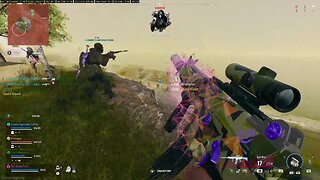 4:07:31
4:07:31
MafiaTwin
13 hours agoFrist Stream On Rumble
53.2K1 -
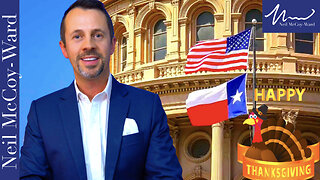 19:41
19:41
Neil McCoy-Ward
16 hours agoFinally! Some Good News Today... (& Happy Thanksgiving!)
37.7K21 -
 7:22:11
7:22:11
tacetmort3m
17 hours ago🔴 LIVE - (HAPPY THANKSGIVING!) BACK WITH MORE STALKER ACTION - STALKER 2 - PART 7
30.3K